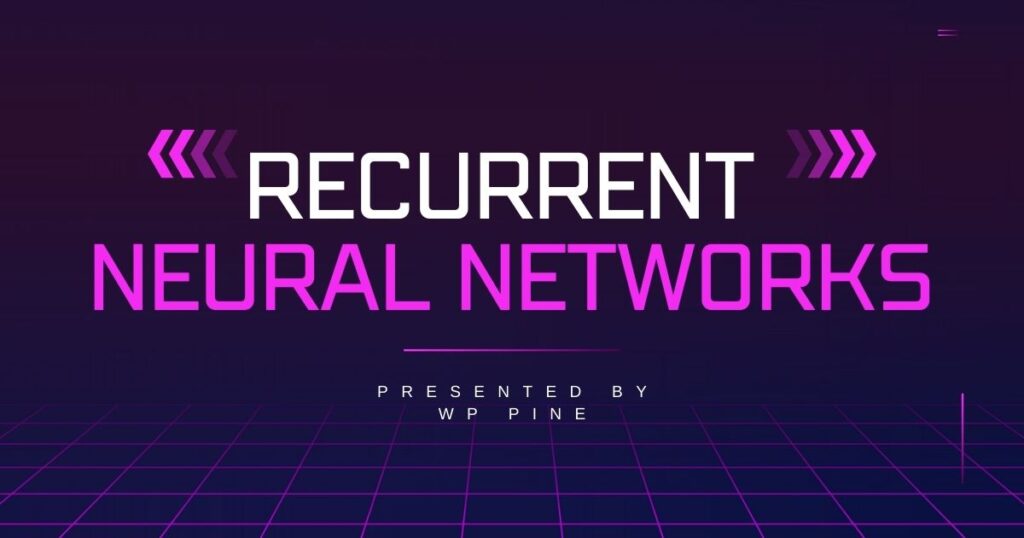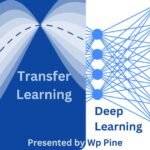RNN has drastically changed the way sequential data is handled, making the models indispensable for language processing, time series analysis, and speech recognition. Unlike other machine learning algorithms, RNNs possess the feature of memory from one time step to the next because of their feedback connection when used in tasks where the order of data is important.
This article offers a detailed review of RNNs and offers an insight into its architecture where one or more layers are connected to work through sequences in a stepwise fashion while serving the purpose of retaining data from the previous computations. It will also describe how RNNs are trained and some difficulties that are met during training, such as vanishing gradients, and methods like LSTM and GRUs to resolve them.
Similarly, we’ll consider the heartfelt uses of RNNs and go deep into the exploration of how RNNs work as the key element in natural language processing and machine translation, stock price prediction, and speech-to-text systems. The insights contained in this article will help you deepen your knowledge of the concept and application of RNNs and make you understand how this promising model is contributing to the development of artificial intelligence in various fields.
Concept of Recurrent Neural Networks (RNNs)
RNNs make a difference because of their peculiar architecture, which consists of loops, facilitating information persistence over time. Unlike feedforward neural networks that process inputs straightforwardly in a one-way direction, RNNs have complex connections forming directed cycles. These cycles enable past outputs to be fed back to the network as inputs for future processing steps so that the model can memorize former information and formulate decisions based on the sequence of data in time. This is one reason why RNNs are particularly effective at tasks involving sequential data, such as language modeling, speech recognition, and time series prediction.
Essential Elements of Recurrent Neural Networks
- Recurrent Connections: These connections between neurons create directed cycles, enabling information to be retained across time steps. This architecture is crucial for handling sequential data.
- Hidden State: The hidden state serves as the network’s memory, capturing information from previous inputs to inform future predictions.
- Time Series Processing: RNNs excel in processing sequences such as sentences or time-stamped data, which is fundamental for tasks like stock market forecasting and natural language understanding.
Architecture of Recurrent Neural Networks
- Input Layer: Receives sequential data inputs, such as words or time-stamps. For a guide on designing input layers, refer to Neural Network Architectures: Input Layers.
- Recurrent Connections: Each neuron connects to itself over different time steps, facilitating the forward transmission of information. This is a key feature distinguishing RNNs from feedforward networks.
- Hidden State: Functions as the memory of the network, storing information from past time steps. Explore How Hidden States Work in RNNs.
- Activation Function: Introduces non-linearity, essential for learning complex patterns. Common activation functions include tanh and sigmoid. Learn more about activation functions at Activation Functions in Neural Networks.
- Output Layer: Generates predictions or outputs based on the processed data. For a detailed overview, see Designing Output Layers for Neural Networks.
Training Recurrent Neural Networks
Training recurrent neural Networks involves several key steps:
- Forward Propagation: Sequential input data is processed through the network over multiple time steps. For a detailed explanation of forward propagation, check out Forward Propagation in Neural Networks.
- Calculate Loss: The loss function measures the difference between predicted and actual outputs. Common loss functions include cross-entropy and mean squared error. See Choosing the Right Loss Function.
- Backpropagation Through Time (BPTT): Computes gradients of the loss with respect to model parameters across time steps.
- Update Weights: Optimization algorithms like SGD and Adam are used to update weights and minimize loss. For a comparison of optimization algorithms, visit Optimization Algorithms for Neural Networks.
Applications of Recurrent Neural Networks
Recurrent Neural Networks are applied in numerous fields:
- Natural Language Processing (NLP): Tasks such as language modeling, machine translation, and sentiment analysis. Explore Applications of RNNs in NLP.
- Time Series Prediction: Used for forecasting stock markets, weather patterns, and energy demand. For more on time series forecasting, read Time Series Forecasting with RNNs.
- Speech Recognition: Converts spoken language into text, critical for virtual assistants. Learn more about speech recognition at Speech Recognition Techniques.
- Video Analysis: Includes action recognition, video captioning, and anomaly detection. Check out RNNs for Video Analysis.
- Healthcare: Applications include patient monitoring and disease progression prediction. For more on healthcare applications, see Healthcare Innovations with RNNs.
Types of Recurrent Neural Networks
- Vanilla RNNs: The simplest form of RNNs with basic recurrent connections. For a basic guide, visit Introduction to Vanilla RNNs.
- Long Short-Term Memory (LSTM): Advanced RNN architecture with gated cells for better long-term dependency capture. Learn more about LSTM at Understanding LSTM Networks.
- Gated Recurrent Unit (GRU): A simpler variant of LSTM with fewer parameters but similar performance. For a comparison, see LSTM vs GRU: Which One to Use.
Recent Developments of Recurrent Neural Networks
Recent advancements in Recurrent Neural Networks include:
- Bidirectional RNNs: Process sequences in both forward and backward directions, enhancing context understanding. Learn about bidirectional RNNs at Bidirectional RNNs in Depth.
- Attention Mechanisms: Focus on relevant parts of the input sequence to improve performance, especially in tasks like machine translation. Read more about attention mechanisms at Attention Mechanisms in Deep Learning.
- Transformer Networks: Offer an alternative to RNNs for sequence modeling, utilizing self-attention for parallel processing. For insights on transformers, see Transformers vs RNNs: A Comprehensive Guide.
Challenges and Concerns
- Vanishing and Exploding Gradient Problem: Gradient updates in RNNs can diminish or explode over long sequences, impacting training stability.
- Memory and Computational Resources: While LSTM and GRU variants help, they still require significant computational resources.
- Sequence Length: RNNs may struggle with very long sequences. Explore strategies to handle long sequences at Managing Long Sequences in RNNs.
Key Outcomes
Recurrent Neural Networks are crucial for processing sequential data, with diverse applications from language modeling to healthcare. By understanding their architecture and training processes, you can effectively utilize RNNs in various real-world scenarios. Ongoing advancements ensure that RNNs remain at the forefront of developing intelligent systems for sequential data analysis.
Additional Resources
For further exploration of Recurrent Neural Networks and related topics, consider these resources:
- Building Models with PyTorch and Keras by Wppine
- A deep dive into CNN by Wppine
- Top 10 Machine Learning Algorithms by Wppine
- Differences Between Meta Learning and Machine Learning by Wppine
- Top 10 Machine Learning Algorithms For Beginner Data Scientists by Wppine




Heya! I’m at work surfing around your blog from my new iphone!
Just wanted to say I love reading through your blog
and look forward to all your posts! Keep up the excellent work!
Thanks! For your honest review.
Pingback: Power of Reinforcement Learning - Learn Key Concepts